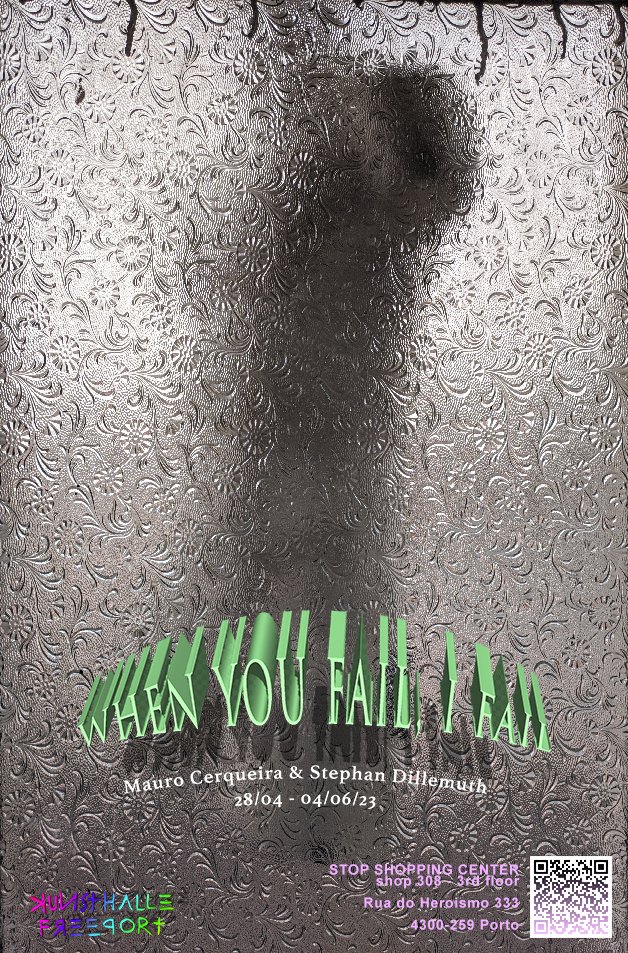
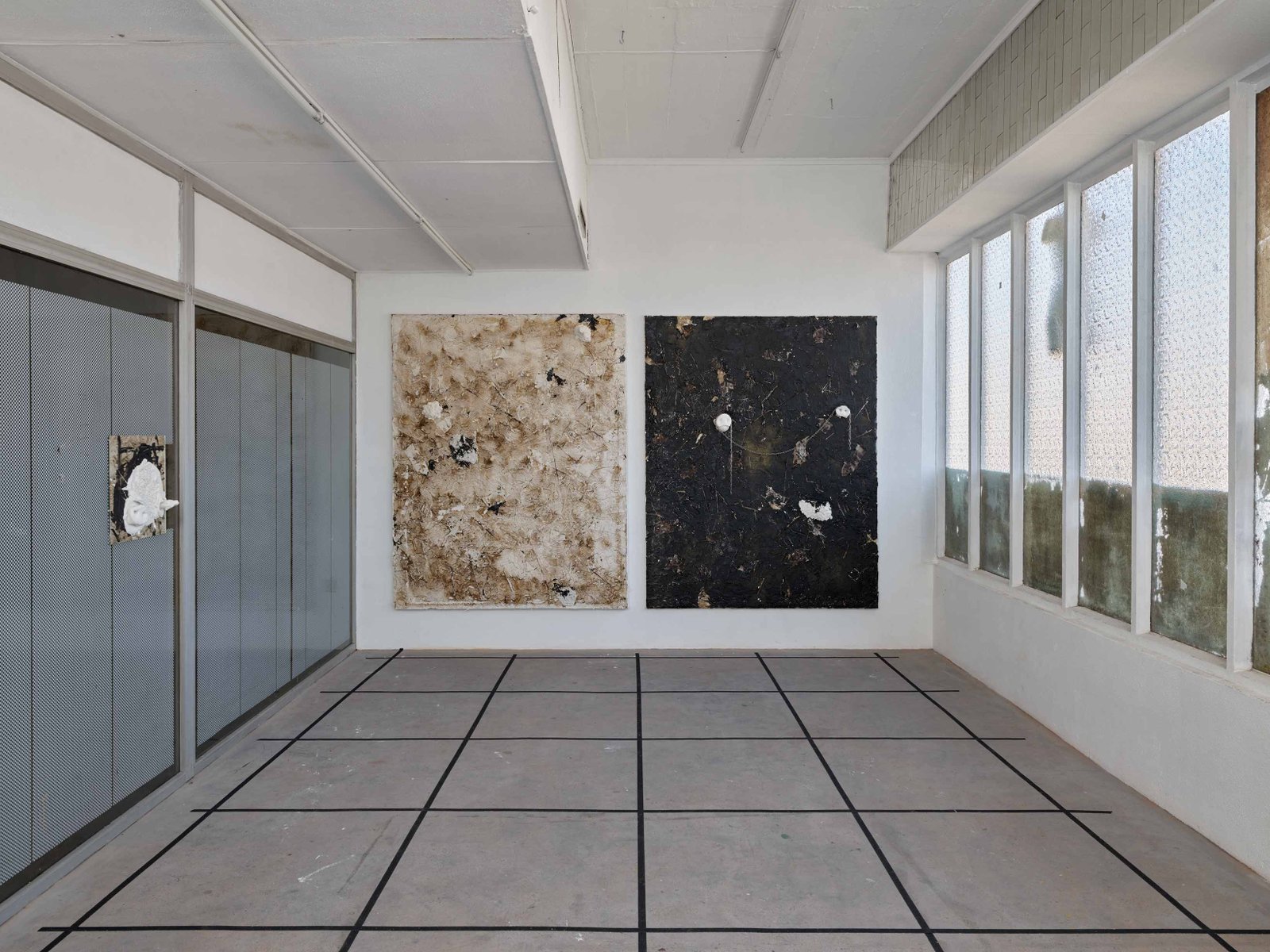
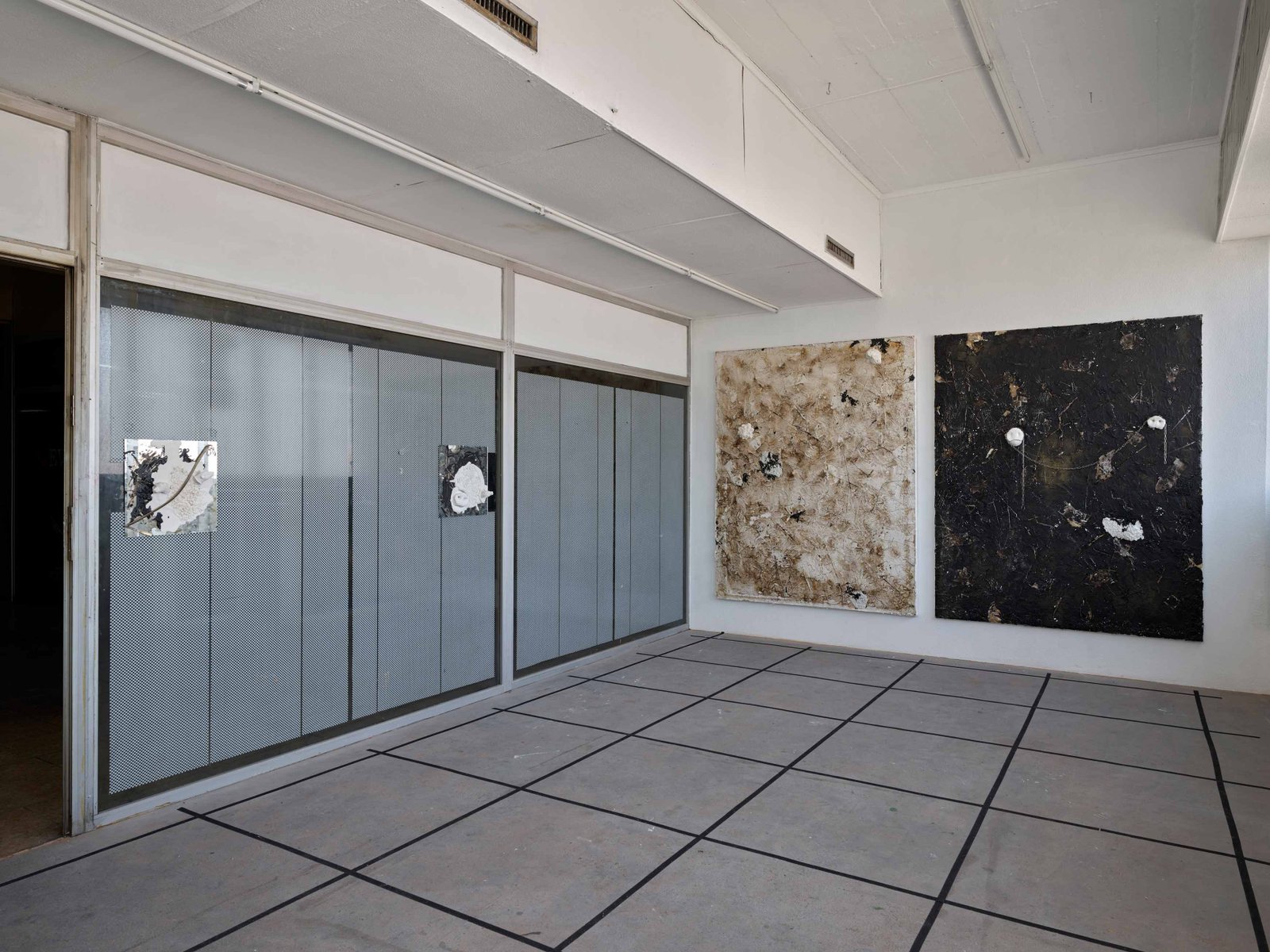
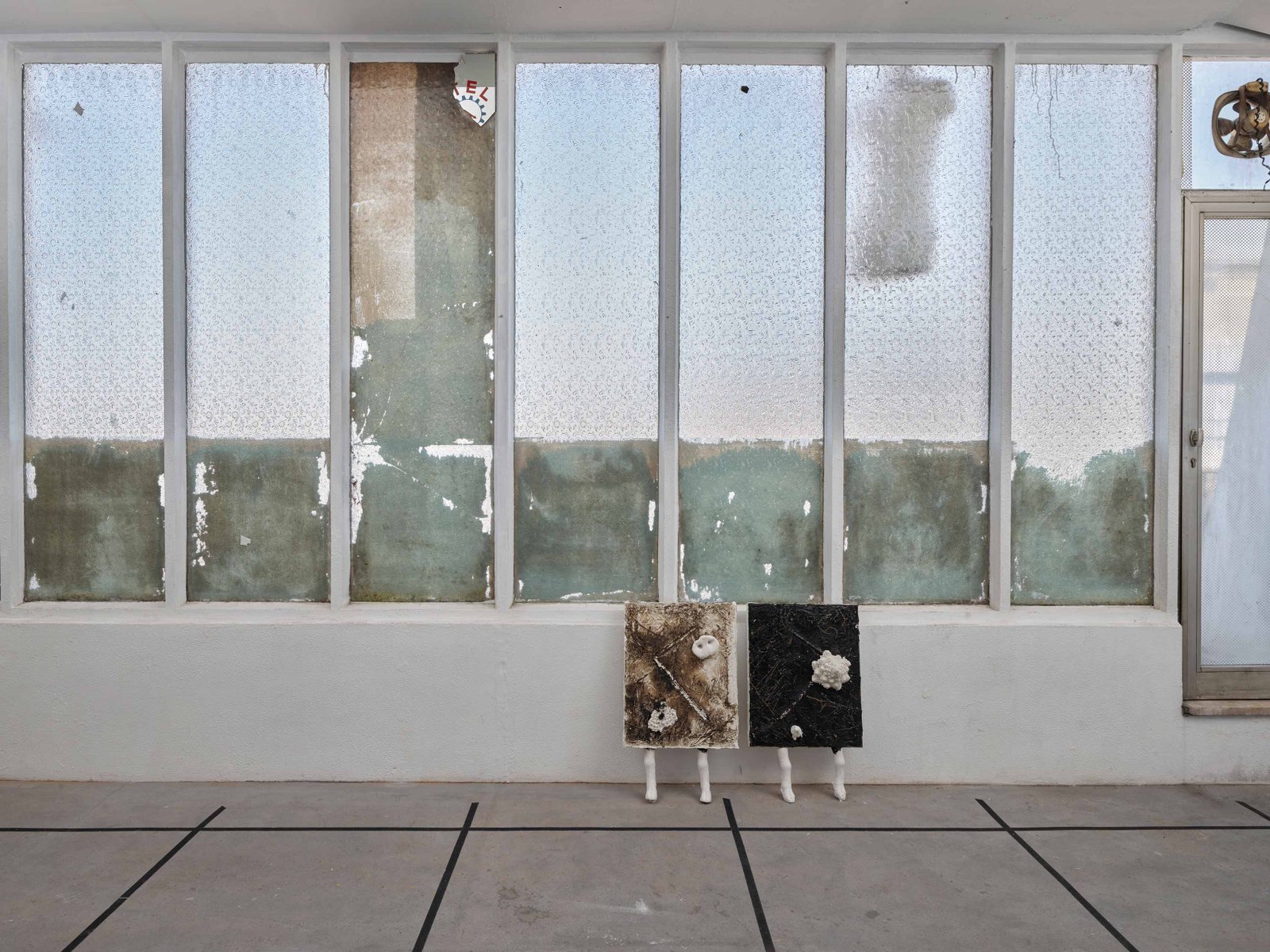
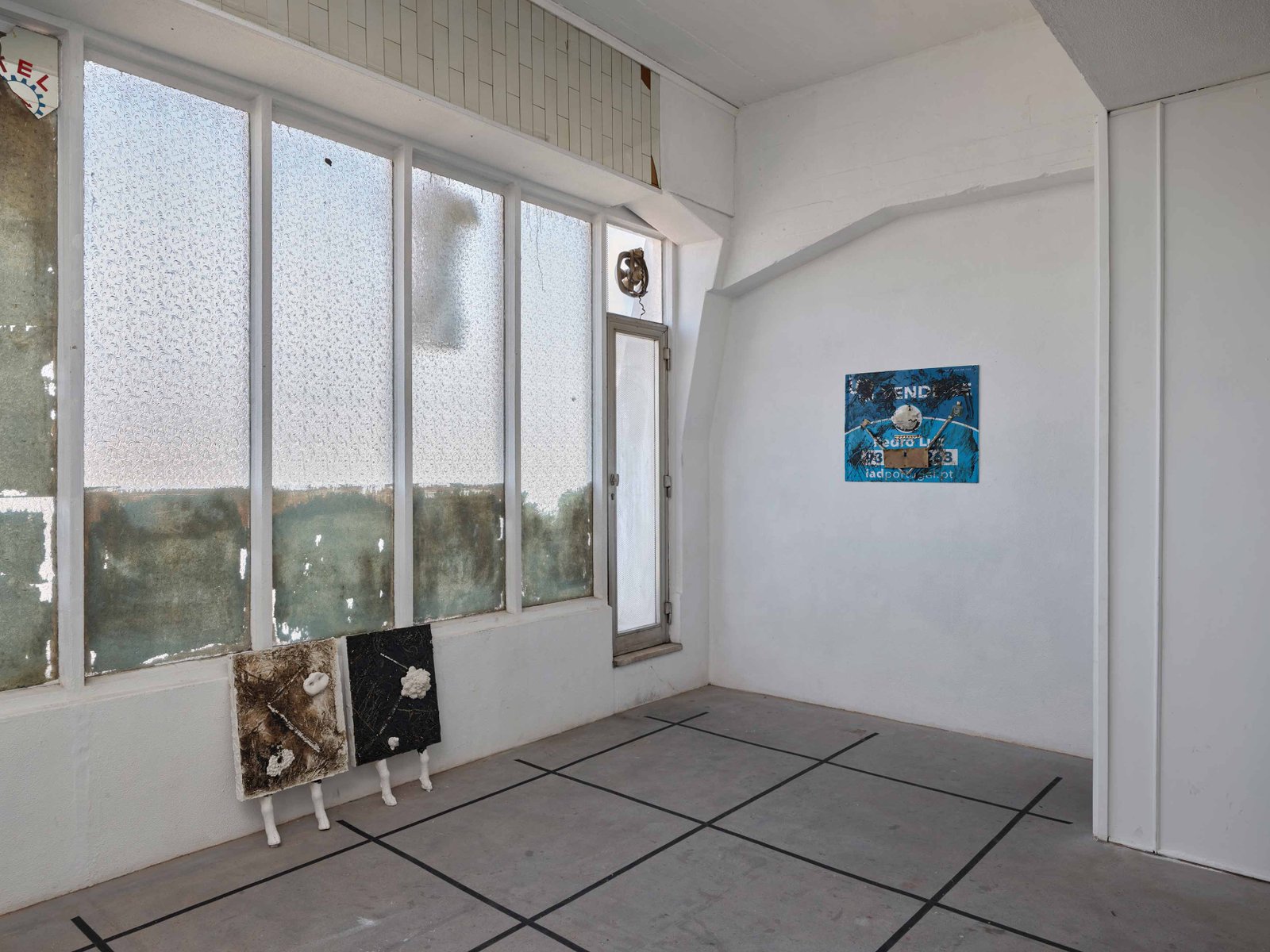
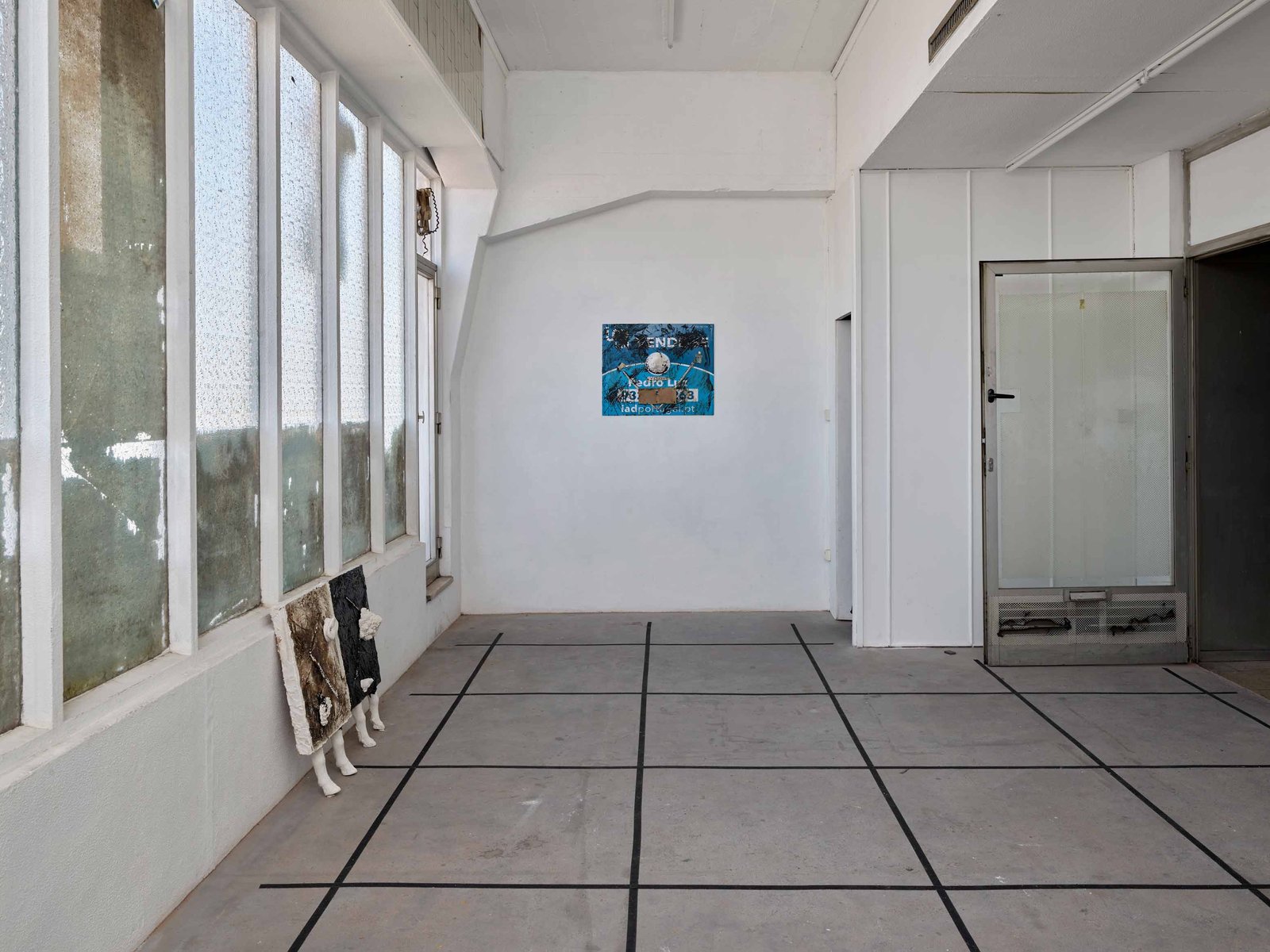
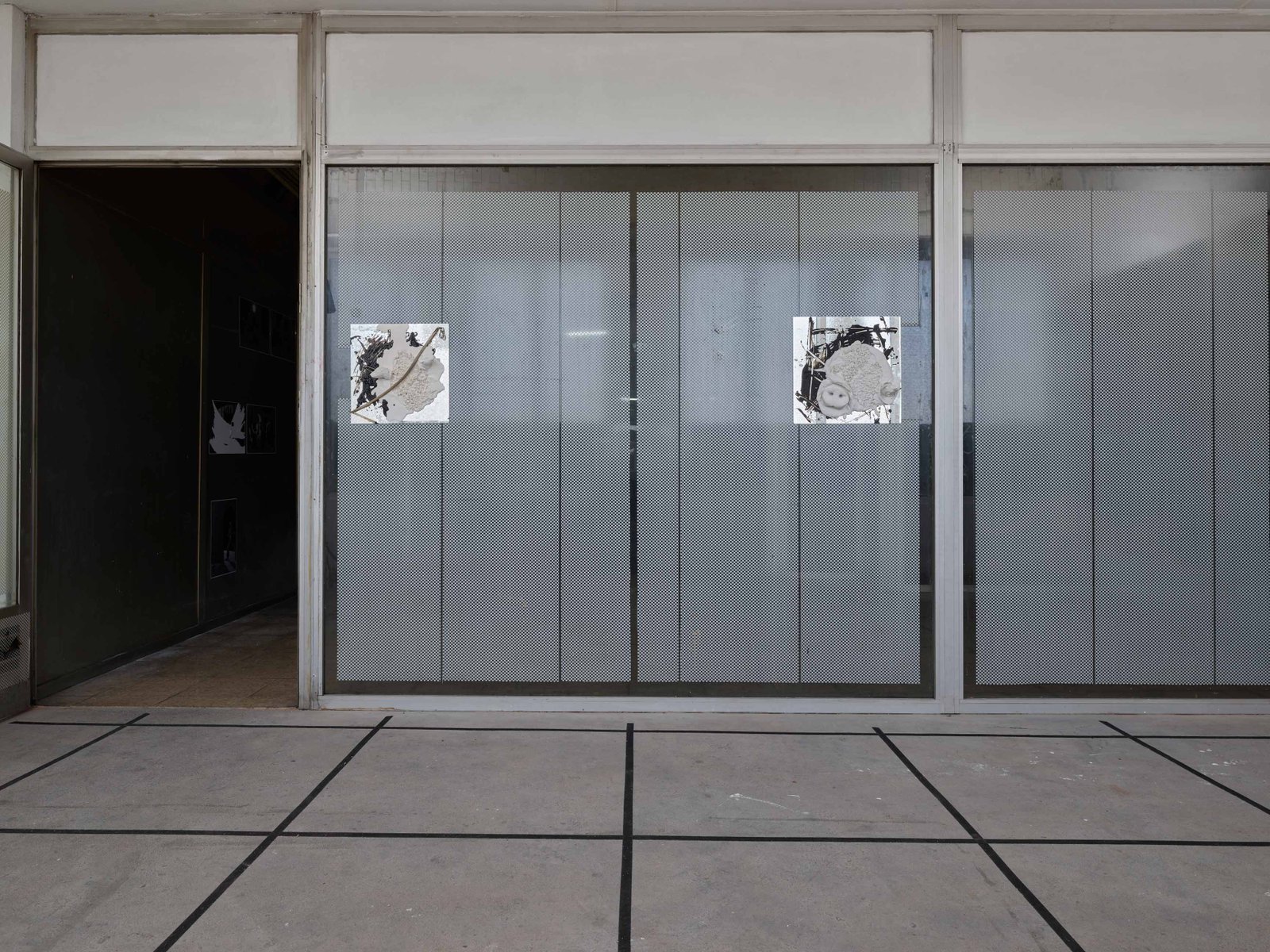
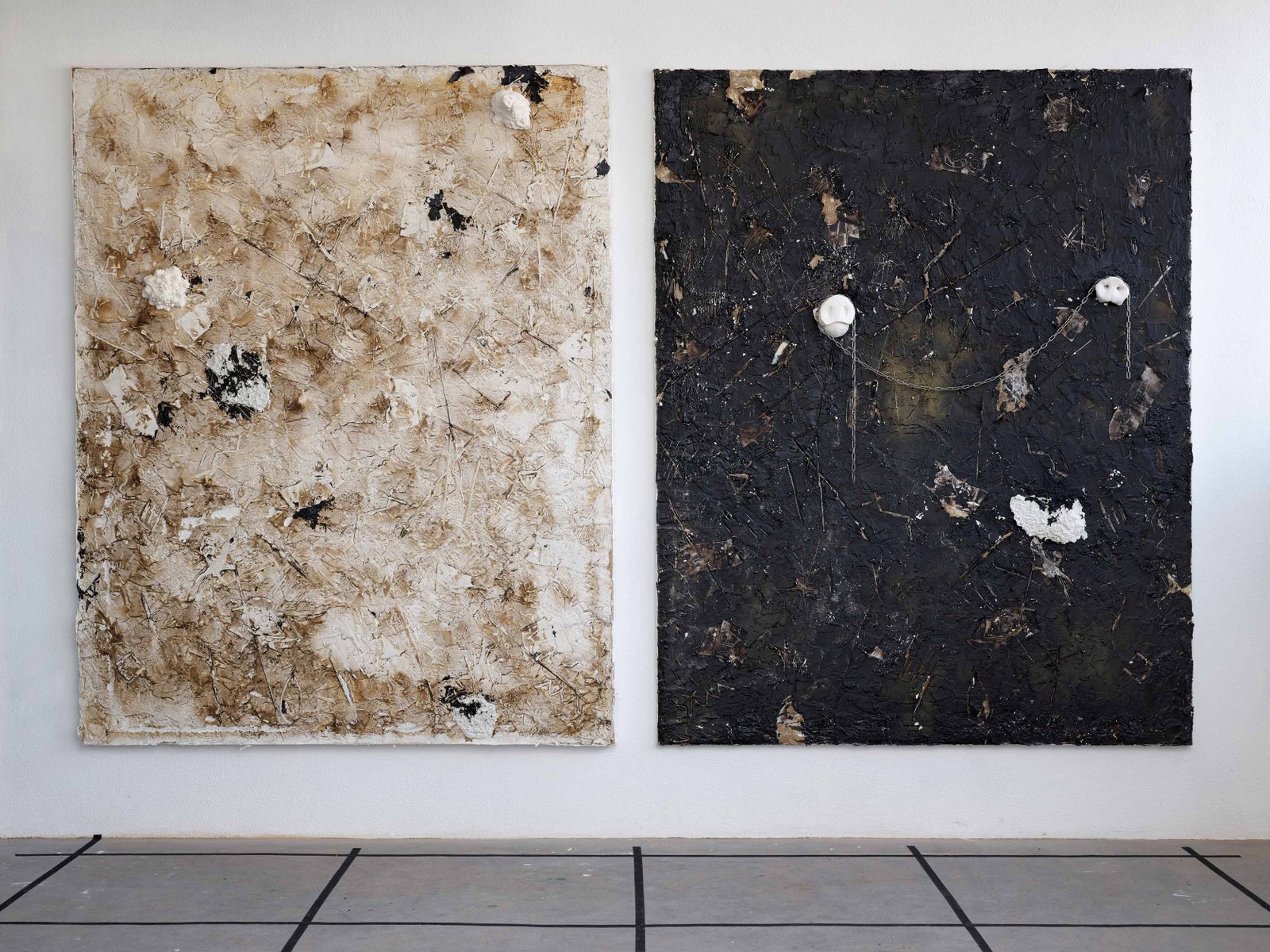
Dust2tar&tar2dust
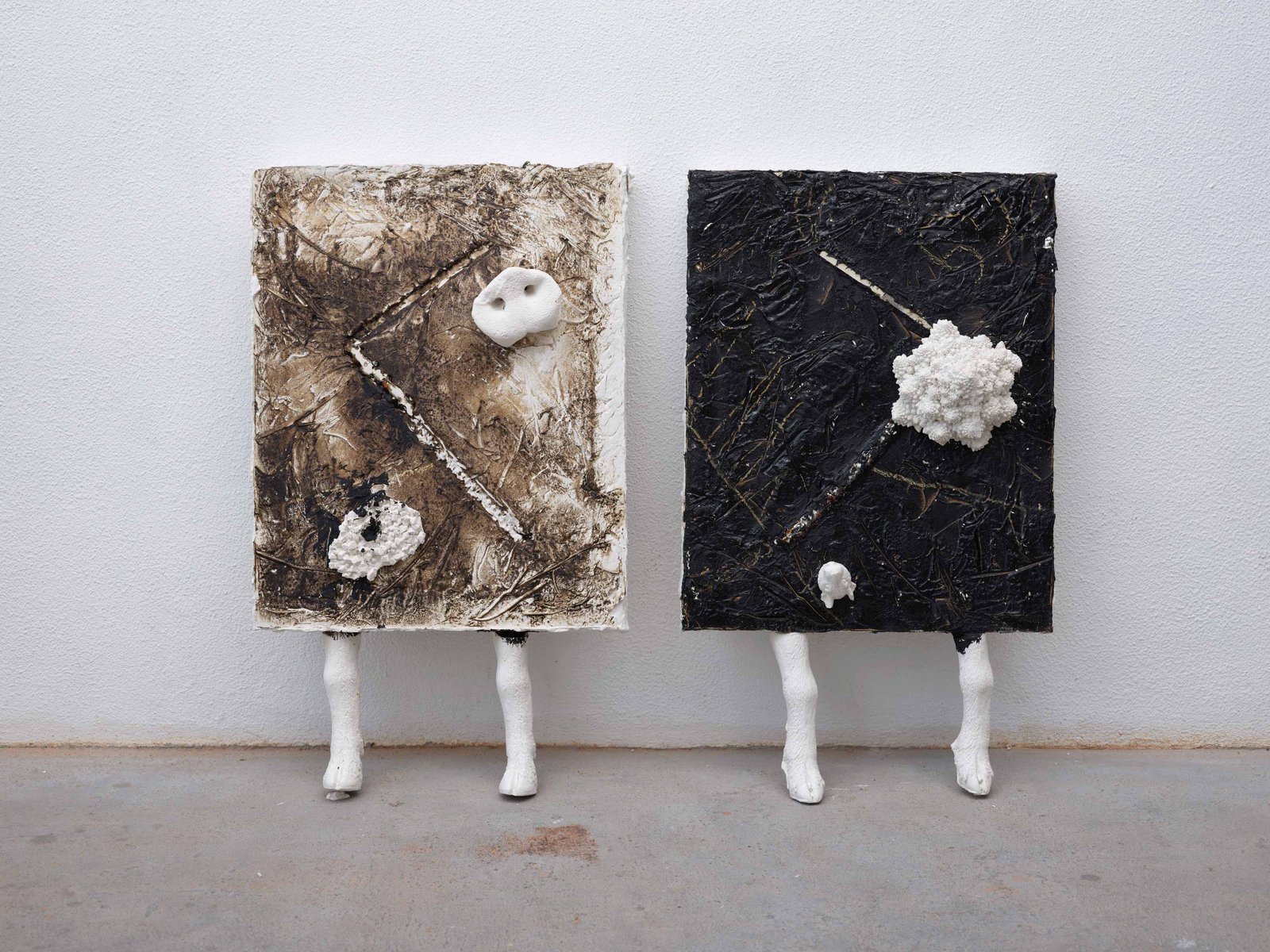
Two Serious Guys
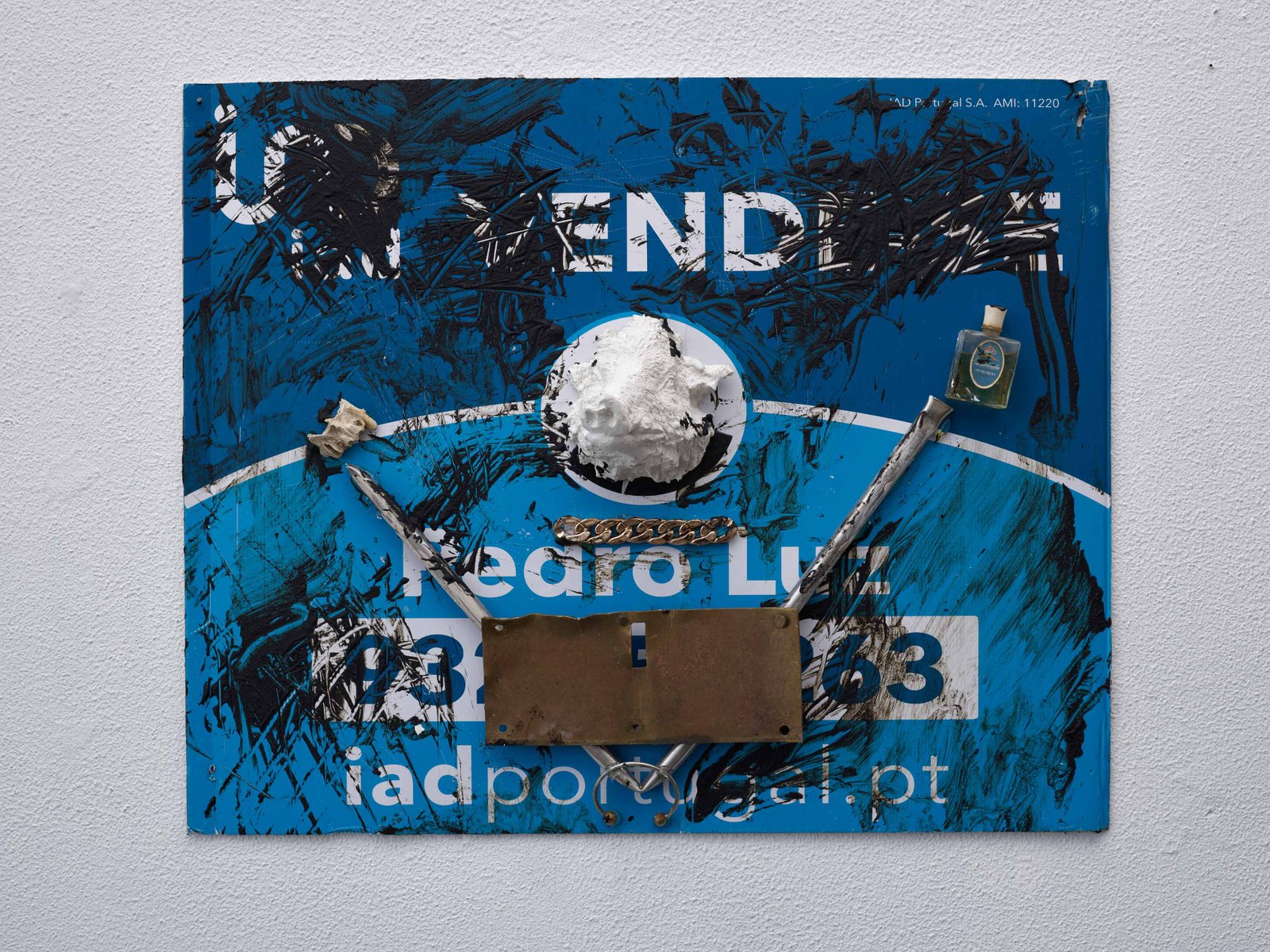
Real Porco
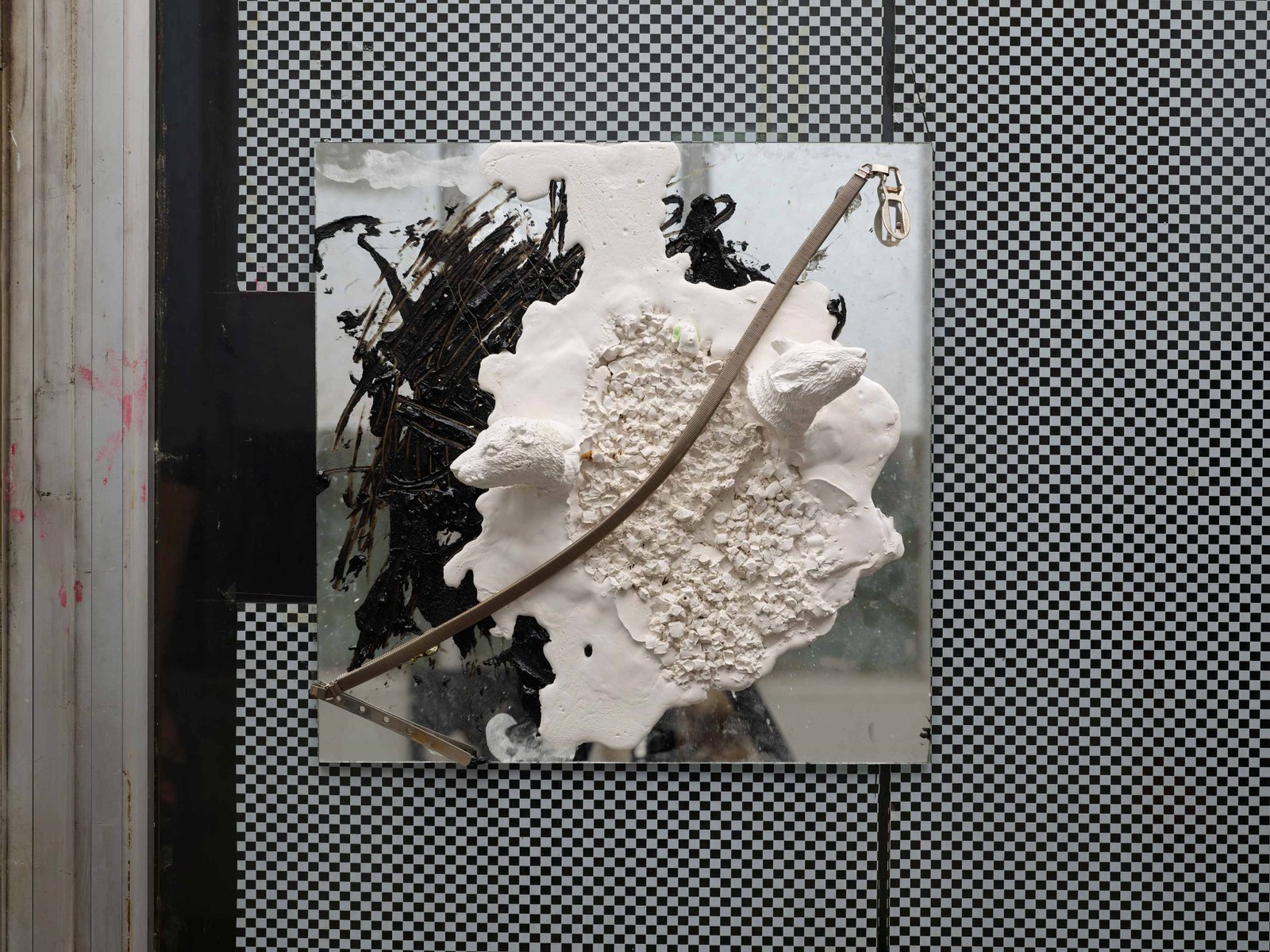
Rat & Tar
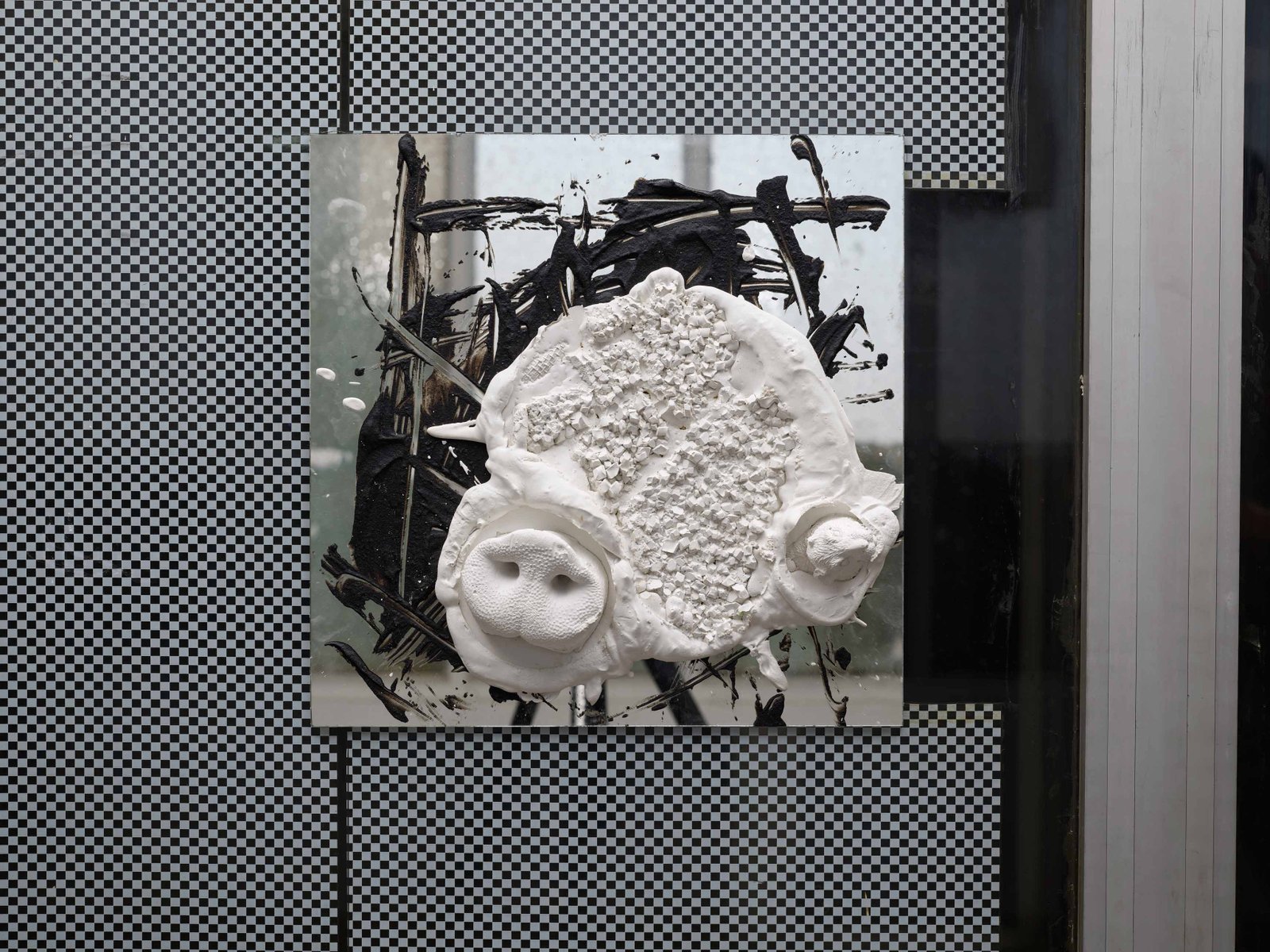
Rat & Tar
Quando tu falhas, eu falho.
O gesso e o alcatrão são produtos de eras passadas. Foram arrancados do solo, refinados e processados. Desempenham um papel importante em reparações baratas, como remendar telhados e paredes. No Porto, antes de a cidade ser tomada por turistas movidos a combustíveis fósseis, esta era uma característica marcante até há poucos anos, quando as pessoas com rendimentos modestos ainda podiam viver no centro da cidade.
Nesta colaboração entre Cerqueira e Dillemuth, o gesso aconchega-se ternamente contra a superfície cicatrizada da primeira pintura de alcatrão realizado por Mauro, espelhando assim o alcatrão e criando um duplo. As superfícies pantanosas dos objectos pictóricos tornam-se frequentemente um local de aterragem para excrementos de moscas e transformam-se em um gabinete de curiosidades de coisas triviais.
Mauro tem sido uma testemunha ocular do processo de redimensionamento do Porto, resgatando do bairro objectos de natureza e valor insignificantes. Objectos seleccionados da sua extensa colecção que alimentam superfícies famintas.
Estêvão, por outro lado, trouxe para o Porto partes do seu alfabeto de moldes de corpos de animais. Estes últimos, porém, são já formas substitutas, realizadas a partir de material barato, decorativo e sentimental e pertencentes a uma civilização que subjugou e explorou o mundo animal.
Estes objectos reúnem-se como um panorama de perda, ou melhor, de celebração, num momento de expectativa de maiores transformações. Embora as imagens sejam instantâneos momentâneos, elas já anunciam os grandes processos de decadência que estão irrevogavelmente por vir.
Falhaste humanidade!
Do pó ao alcatrão do alcatrão ao pó!
__________________________________________________________
English version:
When you fail I fail
Plaster and tar are products of past earth ages. They have been torn from the ground, refined and processed. They play a major role in cheap repair work, such as patching roofs and walls. This was a defining characteristic in Porto, when people of modest means could still afford to live in the city centre before it was taken over by fossil-fueled tourists.
In this exhibition, a collaboration between Cerqueira and Dillemuth, the plaster nestles tenderly against the scarred surface of Mauro's first tar painting, mirroring the tar and cloning a double. Often a landing place for fly droppings, the marshy surfaces of the pictorial efforts become a curiosity cabinet of trivial objects.
Mauro has not only been an eyewitness to the makeover of Porto, throughout he also salvaged things of a seemigly insignificant nature and value from the neighborhood. Some of these objects find a voice in his art.
Stephan, on the other hand, brought parts of his alphabet of animal casts to Porto, however, these are already surrogate forms, cheap, sentiment-laden material that decorates a civilisation that in fact subjugates and exploits the animal world.
These objects come together as a panorama of loss, or rather of celebration, in a moment of expectation of greater transformations. Although the pictures are momentary snapshots, they already herald the great processes of decay that are irrevocably upon us.
Mankind, you ass!
Dust to tar, tar to dust!
__________________________________________________________
German:
When you fail I fail
Gips und Teer sind Produkte vergangener Erdzeitalter. Sie wurden dem Boden entrissen, veredelt und weiterverarbeitet. Sie spielen eine große Rolle bei billigen Reparaturarbeiten wie dem Ausbessern von Dächern und Wänden. In Porto war dies bis vor ein paar Jahren ein typisches Erkennungsmerkmal, als die Bewohner mit bescheidenem Einkommen es sich noch leisten konnten im Stadtzentrum zu wohnen, dann wurde die Stadt von fossil-geölten Touristen übernommen.
In der vorliegenden Ausstellung, eine Zusammenarbeit von Cerqueira und Dillemuth, schmiegt sich Gips zärtlich an die vernarbte Oberfläche von Mauros erstem Teergemälde. Die erstarrte Masse spiegelt den Teer und klont daraus einen Doppelgänger. Oft ein Landeplatz für Fliegendreck, werden die sumpfigen Oberflächen zu Trägern trivialen Fundobjekte und anderen kurioser Gegenständen.
Mauro war nicht nur Augenzeuge der Umgestaltung Portos, er hat auch scheinbar unbedeutende Dinge und Gegenstände aus dem Nachbarschaft geborgen. Einige dieser Gegenstände finden in seiner Kunst eine Stimme.
Stephan hingegen brachte Teile seines Alphabets von Tierabgüssen nach Porto, welche aber bereits Surrogatformen sind, also billiges, Sentiment beladenes Zeugs das eine Zivilisation dekoriert welche die Tierwelt unterjocht und ausgebeutet.
Nun fügen sich diese Objekte beider Künstler zu einem Panorama des Verlustes zusammen, oder vielleicht eher zu einer Feier der Erwartung größerer Umbrüche. Die Bilder verstehen sich zwar als Momentaufnahmen doch künden sie von den grossen Zerfallsprozessen, die sich unwiderruflich ihre Weg bahnen. Menschheit du Arsch!
Staub zu Teer, Teer zu Staub.